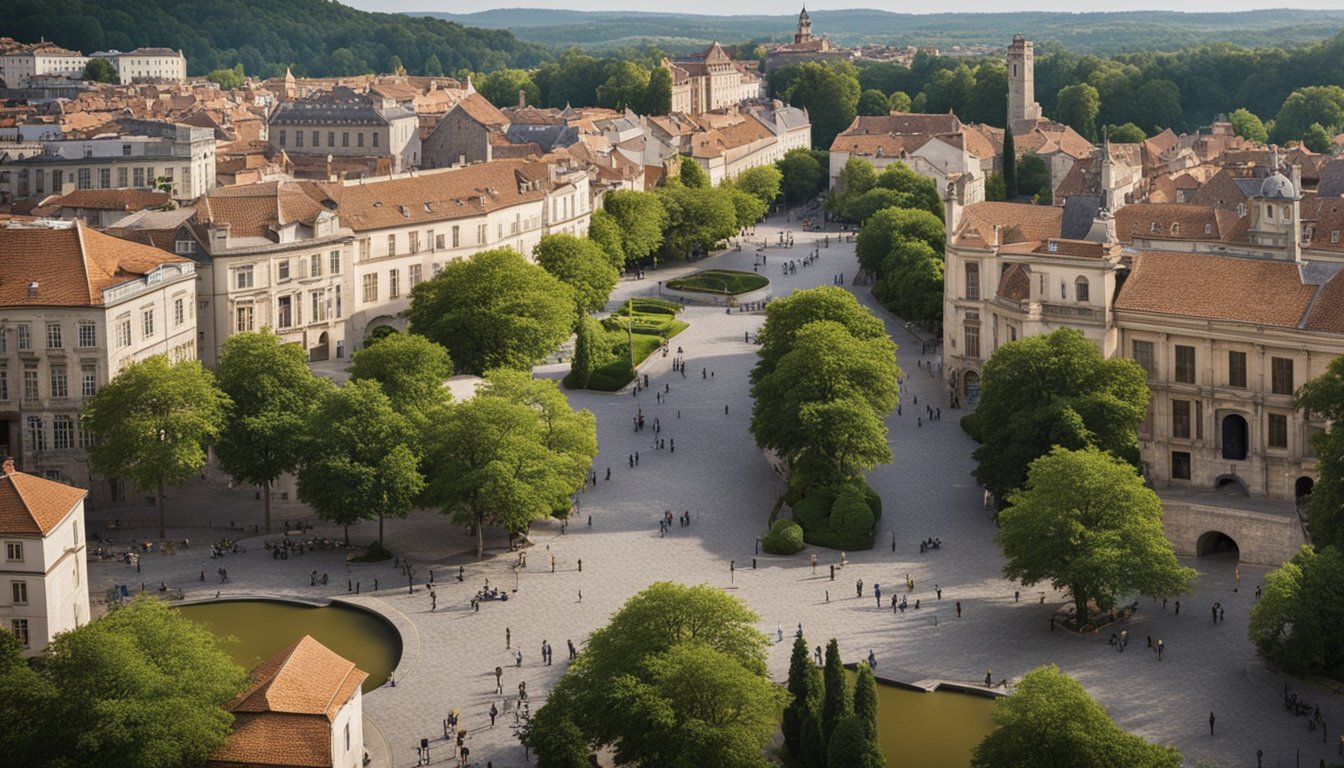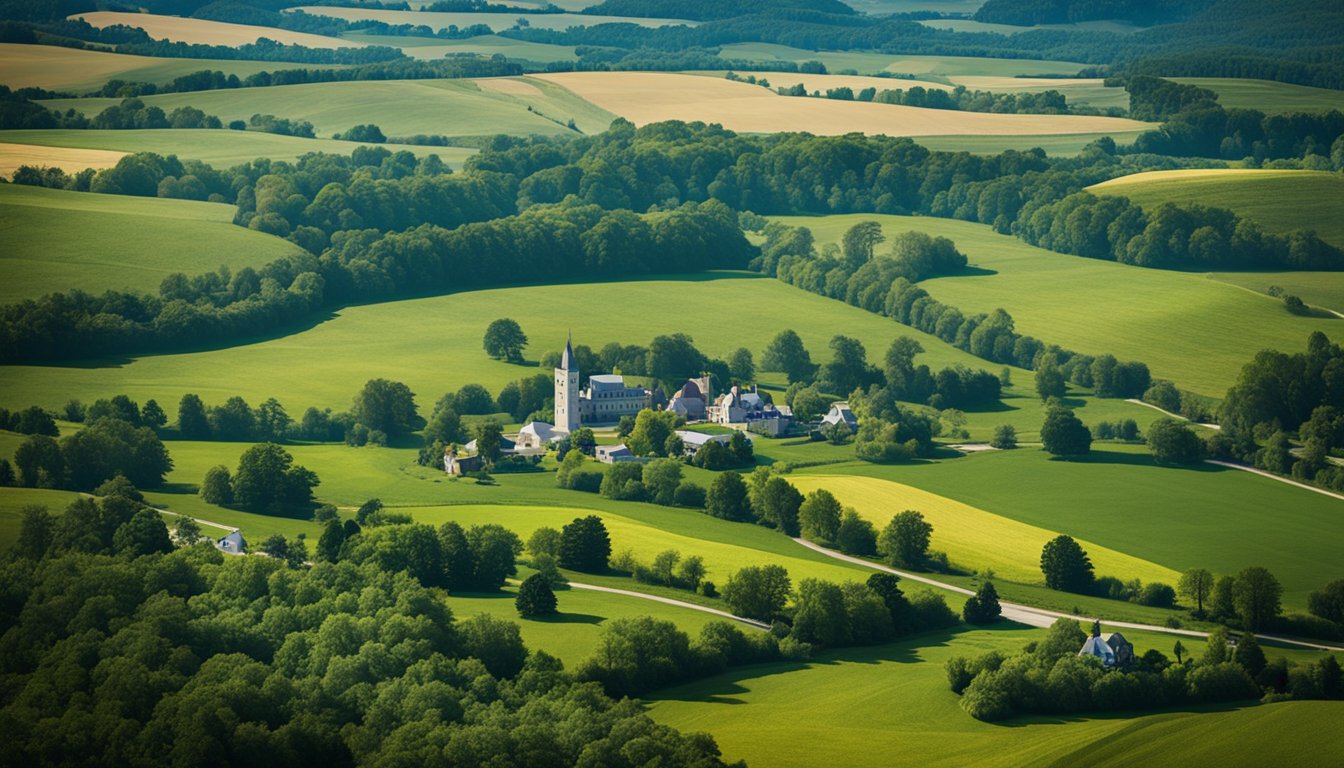The Story and History of the Ontario County of Middlesex:
A Comprehensive Look at Rural Ontario
Middlesex County, located in Southwestern Ontario, has a rich and fascinating history that spans over two centuries. The area has transformed remarkably from its early days as a wilderness into the vibrant rural and urban communities seen today. Initially inhabited by Indigenous peoples, the region quickly developed with settlers turning the land into modest farmlands.
Today, Middlesex County is composed of eight municipalities, home to around 78,000 residents. The communities boast a mix of commercial industries that continue to thrive and grow. Over time, Middlesex has not only preserved its historical roots but also adapted to the changing times while becoming an integral part of Ontario’s landscape.
For those interested in the detailed history, many important matters are documented, from settlement progress to personal records. Comprehensive accounts can be found in historical records that capture the essence of the county’s past and present, inviting readers to explore and appreciate the region’s unique journey.
Early History of Middlesex County

Middlesex County, located in Ontario, has a rich history that includes the early presence of Indigenous peoples, European exploration, and its establishment in 1889. Each phase of its development highlights significant changes and contributions to the county’s cultural and historical landscape.
Indigenous Peoples and Settlements
Before European settlers arrived, the area that would become Middlesex County was home to several Indigenous groups. These peoples lived in established communities and sustained themselves through hunting, fishing, and agriculture. They cultivated the land and built longhouses near waterways, which provided vital resources.
Their knowledge of the land and environment influenced the county’s landscape. They created trails that eventually guided new settlers and traders moving through the region. Archeological evidence from the area shows the presence of tools, pottery, and other artifacts, providing insight into their way of life. The Anishinaabe and other nations had a significant impact on the region’s cultural and social fabric.
European Exploration and Settlement
European exploration began in the late 17th century, led by fur traders and missionaries seeking new opportunities. Gradually, settlers established communities, often along the same waterways that Indigenous peoples used. Immigration increased in the 19th century, with many newcomers drawn to the land for farming and economic prospects.
These settlers founded villages and towns, setting up farms and building infrastructure. The region’s fertile soil and waterways proved ideal for agriculture and transportation. Early settlers worked hard to clear the land and build roads, churches, and schools. This period marked significant growth and development, laying the foundation for future communities in Middlesex County.
Establishment of Middlesex County in 1889
By 1889, Middlesex County was officially established, marking a significant milestone in its history. The county defined its borders, which included several townships and communities that had grown over the years. Government institutions were set up to manage and organize the county’s administration and resources.
This official formation provided a structure for governance and development, allowing for more systematic management of resources and public services. The establishment of Middlesex County as a recognized entity helped in attracting more settlers and investments. This progress contributed to the thriving rural and urban communities that made up the county by the late 19th century. Information about Middlesex County’s establishment can be further explored in the History of the county of Middlesex, Canada.
Development of Municipal Infrastructure

Middlesex County, particularly the city of London, has seen significant advancements in municipal infrastructure. The focus areas include transportation networks, educational institutions, and medical and social services.
Transportation Networks
Infrastructure development in Middlesex County has prioritized optimizing transportation networks to support both urban and rural communities. Roads have been expanded and modernized to improve connectivity between different areas. Major highways serve as critical arteries, facilitating economic activities and daily commutes. Public transit systems in London have been enhanced to provide efficient and accessible transit options. Investments in infrastructure continue to support economic growth and the mobility of residents and visitors alike.
Educational Institutions
Middlesex County hosts several educational institutions, contributing to its reputation as a hub for education. The area is home to numerous primary and secondary schools that provide quality education. London, in particular, features higher education institutions that offer diverse programs. These institutions not only produce skilled graduates but also foster research and innovation, supporting various sectors. Continued support for educational infrastructure ensures access to quality learning environments for all students.
Medical and Social Services
The development of medical and social services in Middlesex County plays a crucial role in supporting community well-being. The area boasts several hospitals and medical centers that provide comprehensive healthcare services. The presence of specialized clinics ensures residents have access to necessary treatments. Social services organizations work to address the needs of vulnerable populations, offering support and resources. These developments contribute to a robust healthcare and social service network that enhances quality of life.
Cultural and Intellectual Contributions

Middlesex County has played a vital role in literature, boasting influential writers and cultural figures. The area is home to collections of important private records preserved in various formats. Public libraries and digital platforms provide invaluable access to historical materials and contemporary literature.
Middlesex County in Literature
Middlesex County serves as a rich backdrop in various literary works. Authors have drawn inspiration from its landscapes and history, contributing to Canadian literary heritage. Many local writers have received positive reviews, highlighting their literary contributions on both national and international stages. Their works often reflect the societal and cultural evolution of the area, bringing Middlesex County’s unique identity to a broader audience.
Notable Personalities and Private Records
Numerous influential personalities have emerged from Middlesex County. These individuals have left a lasting mark through their achievements in various fields. Records detailing their contributions are preserved in private collections and public archives. These records provide a deeper understanding of the intellectual fabric of Middlesex County. A focus on maintaining these archives ensures that their legacies continue to inspire future generations.
Public Libraries and the Internet Archive
Public libraries in Middlesex County are essential hubs for cultural engagement. They offer residents access to a wide range of physical and digital collections. Libraries collaborate with platforms like the Internet Archive to provide access to historical texts and resources. These digital collections, along with services like bookplate preservation and copyright management, support the ongoing educational and cultural development of the community.
Contemporary Middlesex County

Middlesex County, located in Ontario, faces a blend of challenges and opportunities. Its population is diverse and growing, and its economy is evolving with new trends. As an area close to Toronto, it feels the city’s influence in numerous ways, from business to culture.
Demographics and Current Affairs
Middlesex County is home to a diverse population with a notable mix of urban and rural communities. It has experienced consistent population growth over recent years, driven by both individuals moving from larger urban centers and natural growth. The county’s residents include a mix of long-time locals and newcomers.
Local authorities maintain a focus on enhancing community services, health care, and education to meet the needs of its diverse population. Social programs and public amenities are continually evaluated to ensure they cater to both rural and urban populations effectively.
Economic Trends and Opportunities
The economy of Middlesex County is varied, with strengths in agriculture, manufacturing, and service sectors. It benefits from access to nearby markets and trade routes. The region has shown resilience and adaptability, with new economic opportunities arising in technology and innovation sectors.
Employment rates have been relatively steady, with specific growth observed in the tech and service industries. Development initiatives often highlight the potential for further investment in infrastructure to boost economic growth and job creation. Business-friendly policies are designed to attract further investment and encourage local entrepreneurship.
Proximity to Toronto and Urban Influence
Middlesex County’s proximity to Toronto brings both advantages and challenges. Being close to a major urban center provides residents with access to a broader range of services and employment opportunities. The influence of Toronto is evident in cultural exchanges, business interactions, and commuting patterns among residents.
This nearness also impacts housing markets, as some people move from Toronto to seek more affordable living conditions. This urban influence leads to a blend of city and rural lifestyles, offering a unique living experience that combines metropolitan benefits with the charm of smaller communities.
